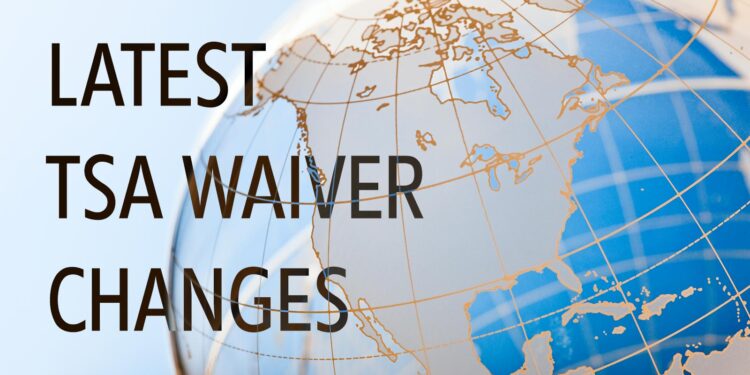OPS ALERT: More TSA Waiver Changes – Effective Immediately

On January 16, 2016, the Federal Aviation Administration (FAA) issued new NOTAMs on TSA Waiver regulations. With these NOTAMs, revised TSA Waiver procedures have become effective for operators with aircraft registered in designated “portal countries.”
The following is an overview of what you need to know:
1. Recent changes
Three NOTAMs were issued – 6/4260, 6/4256, and 6/4255 – and the only change compared to the ones issued in December 2015 are the re-inclusion of “portal countries.” The purpose of this change was to alleviate some of the restrictions impacting operators registered in these portal countries regarding overflying the U.S. and its territories or possessions.
2. Portal country considerations
Aircraft no longer require TSA Waivers to transit U.S. territorial airspace if they’re departing from a portal country and arriving into a portal country, as long as they are also:
1) registered to “portal countries” – Canada, Mexico, Bahamas, Bermuda, British Virgin Islands, and Cayman Islands, AND
2) under 100,309 lbs. maximum takeoff weight (MTOW)
Therefore, an operator with an aircraft under 100,309 lbs. MTOW registered to one of the portal countries may fly direct from Mexico to Canada without a TSA Waiver. However, a direct flight from Canada to Guatemala still requires a TSA Waiver, as Guatemala is not a portal country.
3. Non-portal country considerations
Under current TSA Waiver regulations, operators of aircraft registered in non-portal countries that are less than 100,309 lbs. MTOW require TSA Waivers for all overflight of U.S. territorial airspace, but they do not require waivers when operating within the U.S., with the exception of “special interest countries.”
4. Operating to, from, and within U.S. airspace
As per the previous TSA-related NOTAMs issued December 11, 2015, operators of aircraft under 100,309 lbs. MTOW no longer require TSA Waivers when operating within the U.S., unless their aircraft are registered to “special interest” countries. Special interest countries currently include China, Cuba, Iran, North Korea, Russia, Sudan, and Syria. Operators of aircraft registered to these countries require TSA Waivers for all flights over and within U.S. airspace, its territories and possessions, and they also require Special Routing Authorization from the FAA.
Also, note that for your first stop into the U.S. and last point out of the country, you need to ensure that you have U.S. APIS filed.
5. Obtaining TSA Waivers
Normal lead time to obtain a TSA Waiver is five business days. Blanket TSA Waivers may be obtained for up to 90 days, and we recommend adding any aircraft, crew, and airport ICAOs you may travel to or from on the TSA Waiver application. Note that TSA is closed weekends and holidays and does not process waivers during these times. However, short notice waiver requests may be obtained with less than five business days lead time at TSA’s discretion. All TSA Waivers are applied for online. Note that a login/password is needed to check on the status of your TSA Waiver request. Once a waiver is confirmed TSA will update this on its site. If there are any issues with the waiver request they’ll send you an email. Some of the larger issues with TSA Waiver submissions include incorrect crew and passenger information and filling out the form incorrectly.
Conclusion
This recent change to TSA Waiver regulations only impacts operators with aircraft registered to portal countries and only for aircraft below 100,309 lbs. MTOW operating directly between portal countries. This is an important development that will ease the process for portal country operators.
Questions?
If you have any questions about this article or would like assistance obtaining your next TSA Waiver, please contact me at luisnambo@univ-wea.com.



